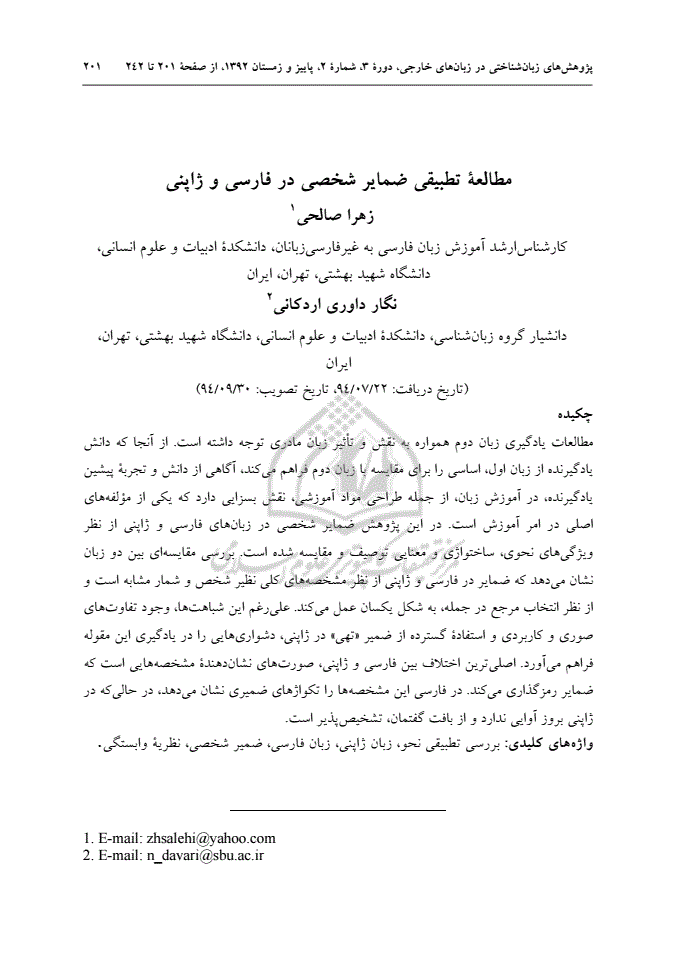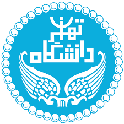Abstract:
مطالعات یادگیری زبان دوم همواره به نقش و تأثیر زبان مادری توجه داشته است. از آنجا که دانش یادگیرنده از زبان اول، اساسی را برای مقایسه با زبان دوم فراهم میکند، آگاهی از دانش و تجربة پیشین یادگیرنده، در آموزش زبان، از جمله طراحی مواد آموزشی، نقش بسزایی دارد که یکی از مؤلفههای اصلی در امر آموزش است. در این پژوهش ضمایر شخصی در زبانهای فارسی و ژاپنی از نظر ویژگیهای نحوی، ساختواژی و معنایی توصیف و مقایسه شده است. بررسی مقایسهای بین دو زبان نشان میدهد که ضمایر در فارسی و ژاپنی از نظر مشخصههای کلی نظیر شخص و شمار مشابه است و از نظر انتخاب مرجع در جمله، به شکل یکسان عمل میکند. علیرغم این شباهتها، وجود تفاوتهای صوری و کاربردی و استفادة گسترده از ضمیر «تهی» در ژاپنی، دشواریهایی را در یادگیری این مقوله فراهم میآورد. اصلیترین اختلاف بین فارسی و ژاپنی، صورتهای نشاندهندة مشخصههایی است که ضمایر رمزگذاری میکند. در فارسی این مشخصهها را تکواژهای ضمیری نشان میدهد، در حالیکه در ژاپنی بروز آوایی ندارد و از بافت گفتمان، تشخیصپذیر است.
Studies related to the second language acquisition have frequently focused on the role of mother tongue. Since the learner’s knowledge in the first language provides a basis to compare it with that of second language, it is assumed that being aware of the learner’s prior knowledge is affective in the syllabus design which itself is a crucial element in teaching. In this study personal pronouns and verbal subject markers are contrasted regarding the syntactic, morphological and semantic features. Contrastive analysis showed that personal pronouns in Persian and Japanese are similar in total characteristics like person and number. Moreover, they act alike in taking antecedent. Although there are some similarities, it can be seen that there are some problems due to the formal and functional differences like “zero” pronoun in Japanese. The main differences between Persian and Japanese were found to be the forms representing pronouns. Persian shows this feature by the inflections of pronoun but in Japanese these features are of no representation and the context makes it manifested.

(پژوهیار,
,
,
)

